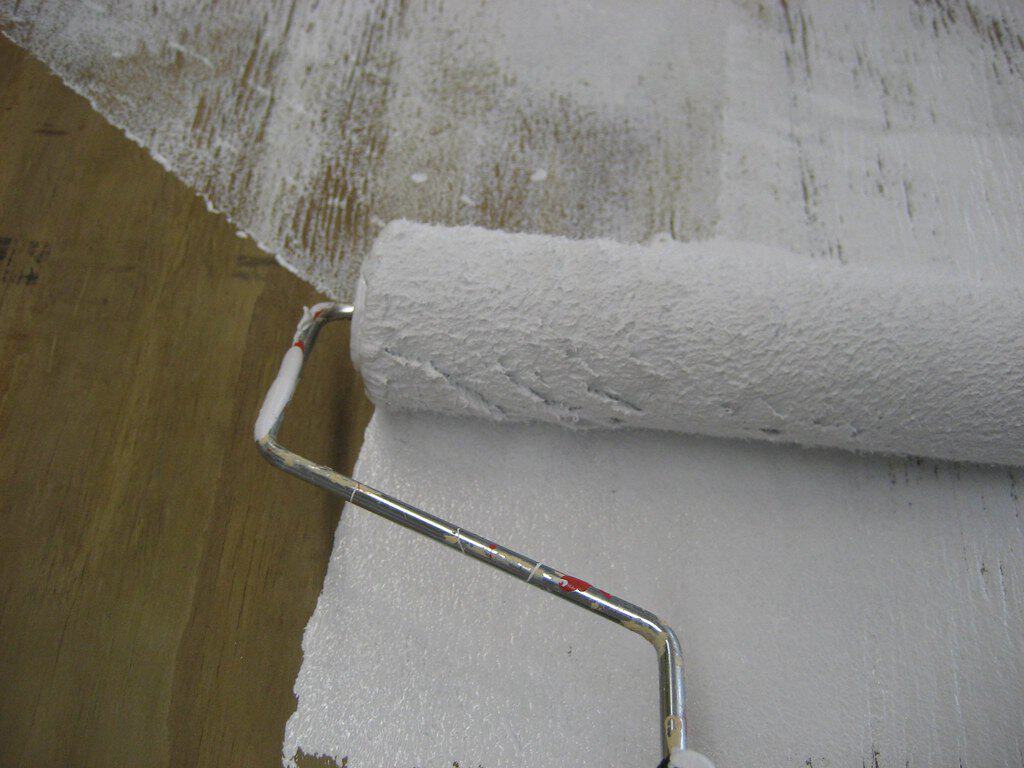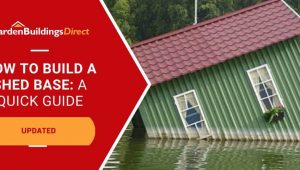Jump to:
We’ll get straight to the point: yes, you can paint pressure treated wood, be it a garden building or patio decking, and so on. But when you do, you can’t just call it a day after that final stroke; it’s different from usual paint projects. There are extra steps you need to take to achieve the best results, and that’s what this guide is for!
Whether you’re planning to buy a pressure treated shed or you already have one, this guide will be useful for your garden planning.
Why Paint Pressure Treated Wood?
On its own, pressure treated wood lasts longer than untreated wood, and has the potential to last longer than annually treated timber. Yet, its greenish tinge might not suit everyone’s tastes. This colour is a byproduct of the chemical treatment process used to protect the wood from decay. It’s brilliant, but it might look a bit out of place in gardens, patios, or decks that favour modern tones like browns and greys. However, if it bothers you, then you’ll want to look at painting it.
When Can You Paint Pressure Treated Wood?
The takeaway here is: are you willing to wait? Pressure-treated lumber must dry out, “seasoned,” or “cured,” whatever you call it before it can be primed or painted. This process takes about 3 to 4 months or longer during winter, up to 6 months, before the moisture levels drop.
So, say you’re looking at buying a pressure treated log cabin or shed—just let the wood be. The same applies if you’ve picked up a few treated lumber pieces from the hardware store. After a few months, give it a moisture test by sprinkling some water on the surface. If the water soaks into the wood, it’s ready to coat. It needs more time if the water beads up and won’t saturate.
What Happens if You Paint It Too Soon?

Unfortunately, it may cause more harm than good. The lumber could decay and deteriorate much faster. It can also cause the boards to wrap, and you run the risk of major paint adhesion issues or peeling. A common issue is the appearance of nasty-looking orange spots as mould grows underneath the paint.
Note: If your project is time-sensitive, we recommend opting for pressure treated wood labelled as kiln-dried after treatment (KDAT). You can paint KDAT lumber much sooner than regular treated ones.
How to Paint Pressure Treated Wood?
So, you’re planning to get a fabulous new garden structure, like pressure treated summer houses, decks, fences, and other similar things. Once you’ve waited for the treatment to thoroughly dry, here are the steps you need to follow when painting:
Step 1: Prep the wood so it’s clean and debris-free
As with any painting steps, you need to start with a clean surface. A quick sweep and removal of any debris with a soft brush and soapy water will do. Spraying it with a hose also does no harm, but make sure that it dries thoroughly. The good thing is that it won’t take so long this time.
Step 2: Apply your primer

Put on the latex primer before the paint. You can use a roller, sprayer, or brush, whatever you prefer. Allow the primer to cure based on the manufacturer’s recommended time, then coat it with paint.
Tip: Always go for a primer formulated for exteriors suitable for pressure treated wood.
Step 3: Paint the treated wood
Once the primer is cured, apply your topcoat. Use water-based paint, as this variety adheres well to the treated wood. Wait for a few hours or, based on the paint manufacturer’s drying time, before adding the second coat.
Give the paint a good stir and try a bit in a hidden spot to see how the colour looks. Also, note that paint usually lasts longer on vertical surfaces like fences than on horizontal ones like decks. So, you might need to repaint those flat areas more often.
Round-up
Pressure treated wood has a strong start and can withstand outdoor conditions better than natural lumber. But it won’t last forever. Adding paint, however, can extend its life further and make it look better. Just be sure the treated lumber is ready before painting; KDAT wood might be your best option if you’re in a hurry.

If you don’t mind waiting, we hope the above steps help you get it right!
This guide might have helped inform you on whether a pressure treated building is right for you, especially if you’re in the market for a shed.
For more buying advice, check out these guides:





